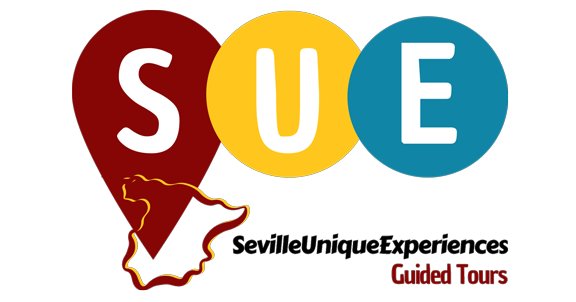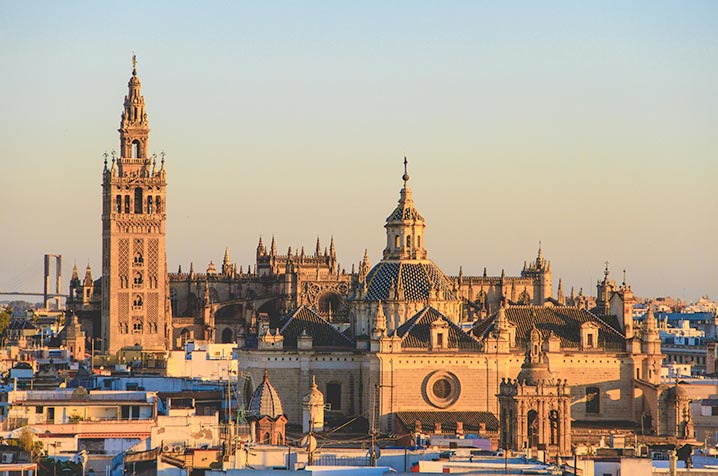Churches in Seville
Do you know how many churches in Seville are? While the exact number can vary depending on how one counts smaller chapels and private or institutional places of worship, it is generally accepted that there are around 125 churches in Seville. Among its architectural treasures, the churches of Seville stand out as magnificent monuments that reflect the city’s deep religious heritage and artistic splendor. This comprehensive article by Seville Unique Experience takes you on a journey through ten of Seville’s most famous churches, each with its unique history and charm.
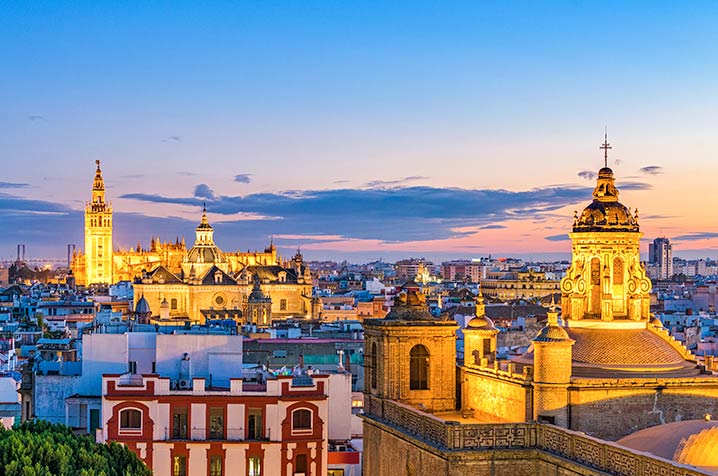
Exploring best churches in Seville
Seville’s churches are more than just places of worship; they are living museums that showcase the city’s rich cultural and architectural heritage. From the grandiose Seville Cathedral to the intimate Church of San Lorenzo, each church offers a unique experience for visitors, blending history, art, and spirituality. Whether you are an architecture enthusiast, a history buff, or a spiritual seeker, the catholic churches in Seville provide a fascinating and enriching journey through the city’s past and present. So, take your time to explore these magnificent monuments, and let the beauty and serenity of Seville’s most remarkable churches, each with its unique history and charm. These sacred sites not only offer spiritual solace but also captivate tourists with their architectural brilliance and cultural significance.
Catedral de Sevilla
No tour of Seville’s churches would be complete without visiting the Seville Cathedral, one of the largest and most magnificent cathedrals in the world. Officially known as the Cathedral of Saint Mary of the See, this Gothic masterpiece was built on the site of a former mosque and completed in the early 16th century.
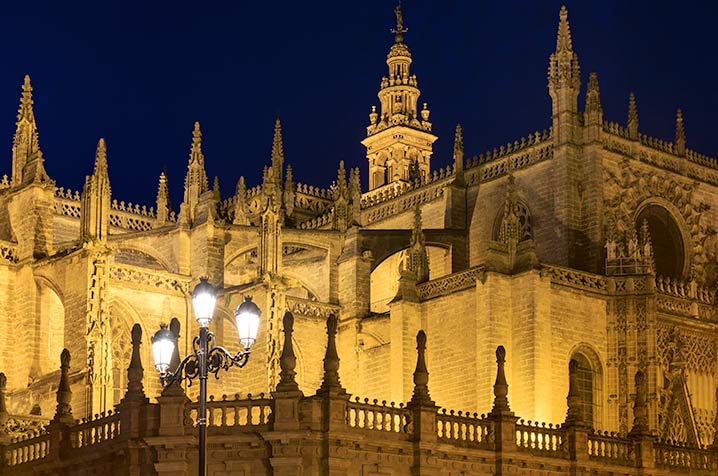
The cathedral’s exterior is a breathtaking sight, with its soaring spires, intricate carvings, and the iconic Giralda tower, a former minaret converted into a bell tower.
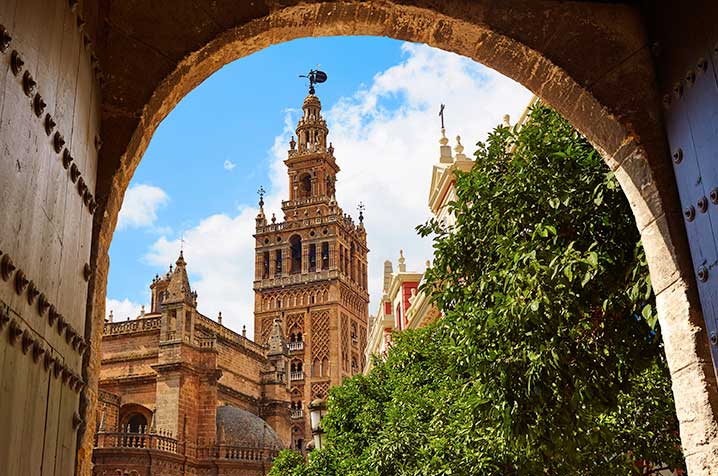
Seville Cathedral interior is equally awe-inspiring, featuring the world’s largest Gothic nave, a stunning altarpiece covered in gold leaf, and the tomb of Christopher Columbus. The cathedral also houses a remarkable collection of religious art, including paintings by Murillo and Goya. Visitors can explore the numerous chapels, the Royal Chapel, and the sacristy, each offering a unique glimpse into the cathedral’s rich history and artistic heritage.
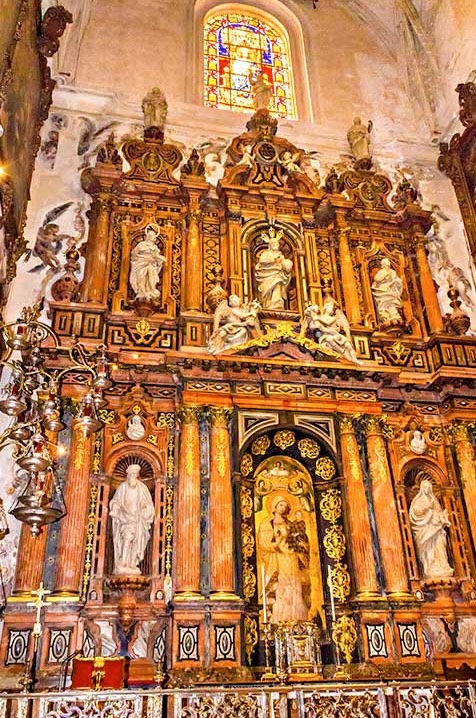
A visit to Seville Cathedral is a journey through centuries of religious devotion and architectural brilliance, making it a highlight of any trip to Seville.
Iglesia del Salvador Sevilla
The Church El Salvador Seville (Iglesia del Salvador), is the second-largest church in Seville after the Cathedral. Built on the site of a former mosque, this Baroque-style church is a masterpiece of architecture and a vital religious site. Its construction began in 1674 and concluded in 1712, featuring contributions from renowned architects Leonardo de Figueroa and his son, Diego Antonio de Figueroa.
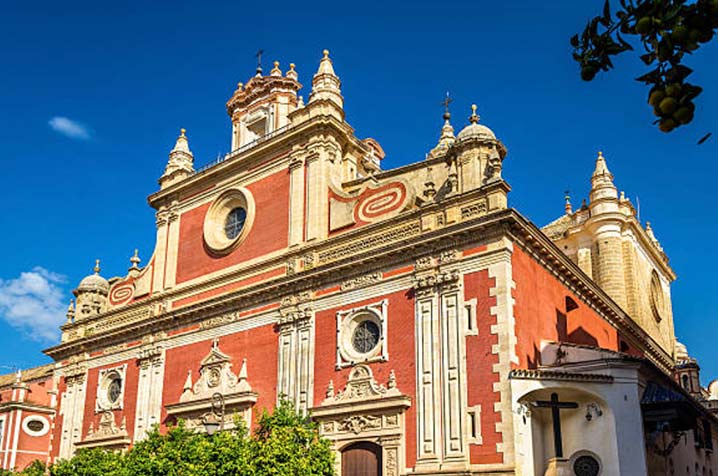
The church’s grand facade, adorned with intricate sculptures and reliefs, sets the tone for the opulence within.
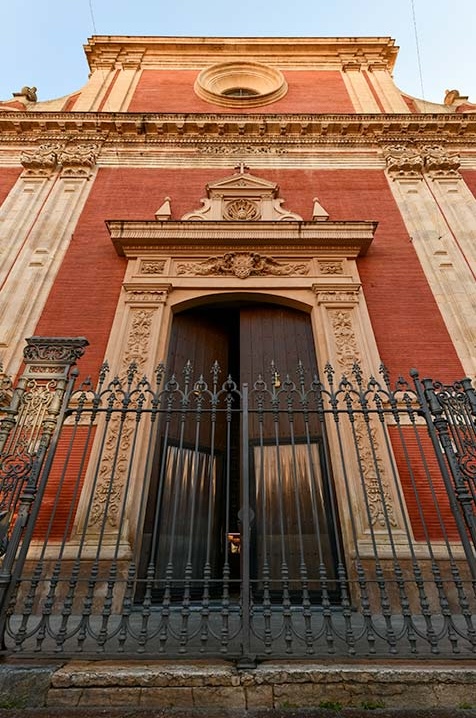
The interior is equally breathtaking, boasting a richly decorated nave with gilded altarpieces, vibrant frescoes, and an impressive collection of religious art. The main altarpiece, created by Cayetano de Acosta, is a highlight, showcasing the skill and devotion invested in its creation. El Salvador is not just a place of worship but a historical monument that offers visitors a glimpse into Seville’s Baroque past.
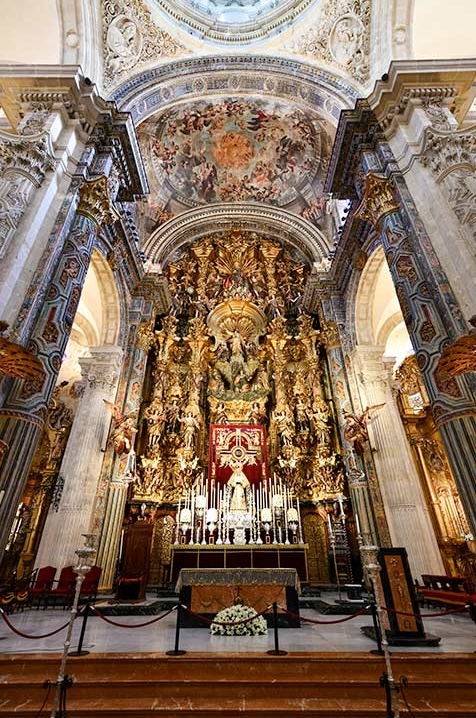
The role of the Church El Salvador on Palm Sunday
The Church El Salvador plays a significant role in Seville’s Palm Sunday (Domingo de Ramos) celebration, marking the beginning of the Holy Week (Semana Santa). The church of is home to the Brotherhood of El Amor (Hermandad del Amor), which organizes one of the most anticipated processions on this day. The Borriquita is particularly special because it is often considered the procession that officially opens Holy Week in Seville. It is known for its vibrant and joyful atmosphere, in contrast to the more somber processions later in the week.
Following the Borriquita is the float of the Virgin Mary under the title of Our Lady of Peace (Virgen de la Paz or Nuestra Señora de la Paz). This paso, adorned with intricate silver work and floral arrangements, adds a touch of solemnity and devotion to the procession.
Basílica de la Macarena
Macarena Church (Basílica de La Macarena) is perhaps one of Seville’s most beloved religious sites, especially revered during the Holy Week. Dedicated to the Virgen de la Esperanza Macarena, the basilica is a blend of Neo-Baroque and modernist styles, completed in 1949.
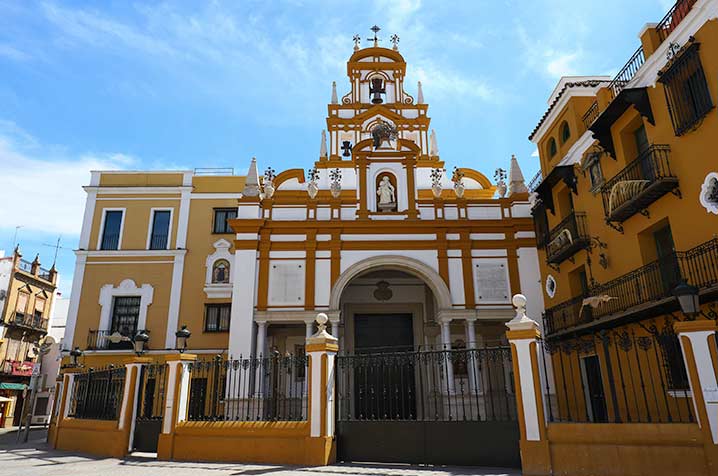
The basilica’s main attraction is the statue of the Virgin Macarena, an icon of Seville’s Semana Santa (Holy Week). The statue, adorned with a crown and luxurious robes, is a symbol of hope and consolation for many Sevillians. The basilica also houses a museum that offers insights into the history of the Esperanza Macarena and the traditions of the Holy Week processions. Visitors can explore the collection of religious artifacts, robes, and memorabilia that showcase the deep-rooted devotion and cultural heritage of Seville.
Iglesia de San Lorenzo Sevilla
San Lorenzo Catholic Church (Iglesia de San Lorenzo) is another gem in Seville’s ecclesiastical landscape. Situated in the picturesque San Lorenzo Place (Plaza de San Lorenzo), this church dates back to the 13th century, though it has undergone several renovations over the centuries. Its architecture is a harmonious blend of Gothic, Mudejar, and Baroque styles.
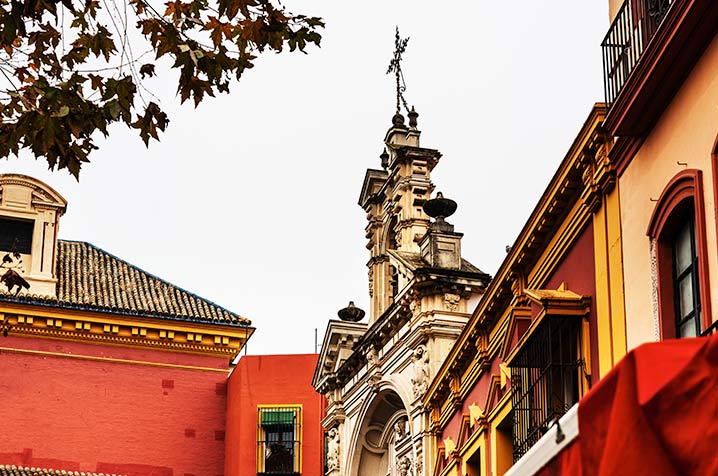
The facade of San Lorenzo is relatively austere, but the interior reveals a rich tapestry of artistic and religious elements. The main altar, crafted by Juan de Mesa, is a notable feature, along with the numerous side chapels adorned with sculptures and paintings from various periods.
Basílica del Gran Poder
The Jesus of the Great Power (Basílica de Jesús del Gran Poder) is one of the most important and beloved religious sites in Seville. Located in the vibrant neighborhood of San Lorenzo, this church is home to the Brotherhood of the Great Power (Hermandad del Gran Poder), whose revered statue of Jesus is a focal point during Holy Week processions.
The basilica, constructed in a neoclassical style with a modernist twist, offers a serene interior that invites contemplation and prayer. Its significance extends beyond religious devotion; it stands as a symbol of Seville’s deep-rooted cultural and spiritual heritage.
Iglesia de Santa Ana Sevilla
The Church of Santa Ana (Iglesia de Santa Ana), located in the Triana district, is one of Seville’s oldest churches. Built in the late 13th century by order of King Alfonso X, it is affectionately known as the “Cathedral of Triana.” This church is a prime example of Gothic-Mudejar architecture, characterized by its brick construction and decorative ceramic tiles.
Santa Ana’s exterior is marked by its robust, fortress-like appearance, while the interior is a treasure trove of artistic and religious artifacts. The main altar, featuring a 16th-century altarpiece, is a focal point, along with the chapels dedicated to various saints. The church’s history is closely intertwined with the local community, and it remains an important spiritual center for the residents of Triana. Visitors can appreciate the blend of architectural styles and the deep sense of history that permeates this venerable church.
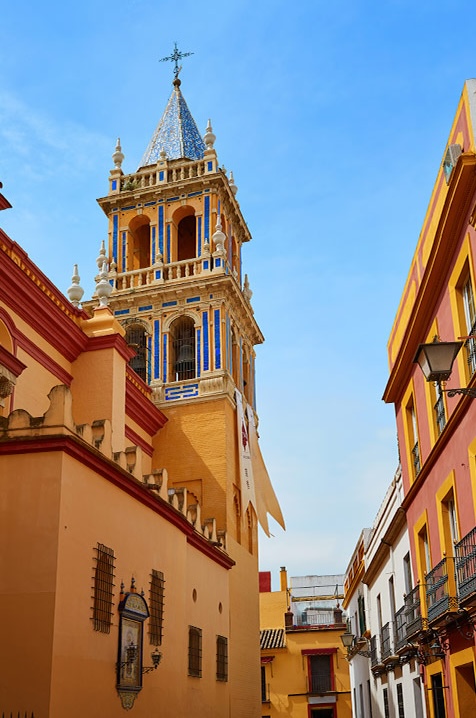
Iglesia de San Luis de los Franceses
The Church of San Luis de los Franceses (Iglesia de San Luis de los Franceses) is a stunning example of Baroque architecture in Seville. Originally built as part of a Jesuit novitiate in the 18th century, the church was designed by Leonardo de Figueroa and is known for its elaborate facade and ornate interior.
San Luis de los Franceses is a visual feast for visitors, with its lavish decoration, intricate stucco work, and frescoes that adorn the dome and walls. The main altar is particularly impressive, featuring a series of sculptures and gilded details that highlight the craftsmanship of the period. The church also has a significant historical role, having served various religious orders over the centuries. Today, it stands as a monument to Baroque art and architecture, drawing tourists who appreciate its beauty and historical significance.
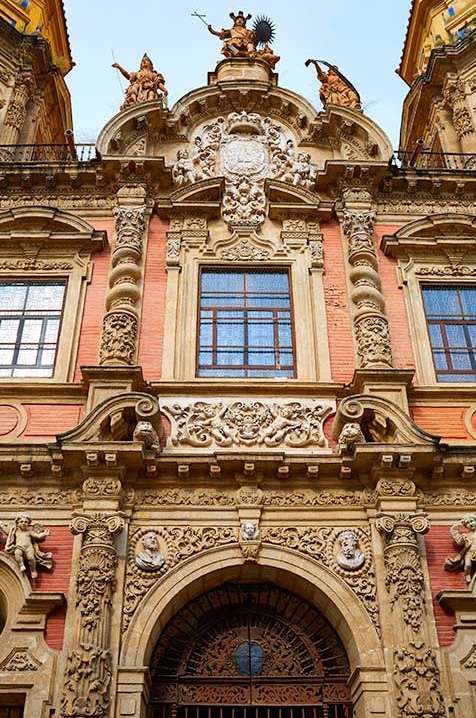
Iglesia de Santa Catalina Sevilla
The Church of Santa Catalina (Iglesia de Santa Catalina) a remarkable blend of architectural styles, reflecting its long history and the various influences that have shaped it.
Santa Catalina’s exterior is a testament to its Mudejar roots, with its distinctive brickwork and horseshoe arches. The interior is equally fascinating, featuring a mix of Gothic ribbed vaults and Baroque altarpieces. The main altar, with its richly decorated altarpiece, is a highlight, along with the numerous chapels that house religious sculptures and paintings. The church’s history as a former mosque adds an extra layer of cultural significance, making it a unique destination for visitors interested in Seville’s diverse architectural heritage.
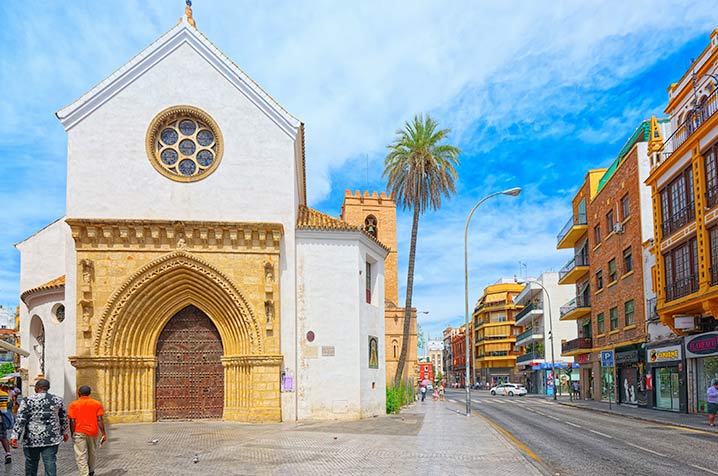
Iglesia de la Magdalena Sevilla
Magdalena Churche Seville (Iglesia de la Magdalena Sevilla) is a Baroque masterpiece located in the heart of Seville. Originally part of a Dominican convent, the church was rebuilt in the 18th century and is renowned for its elaborate decoration and artistic treasures.
La Magdalena’s facade is a stunning example of Baroque architecture, with its intricate reliefs and statues. The interior is equally impressive, featuring a richly decorated nave with gilded altarpieces, frescoes, and sculptures. The main altar, designed by Leonardo de Figueroa, is a highlight, showcasing the opulence and artistic skill of the Baroque period. The church also houses several important works of art, including paintings by Francisco de Zurbarán. La Magdalena is a must-visit for tourists interested in Baroque art and architecture, offering a visual feast of religious and artistic splendor.
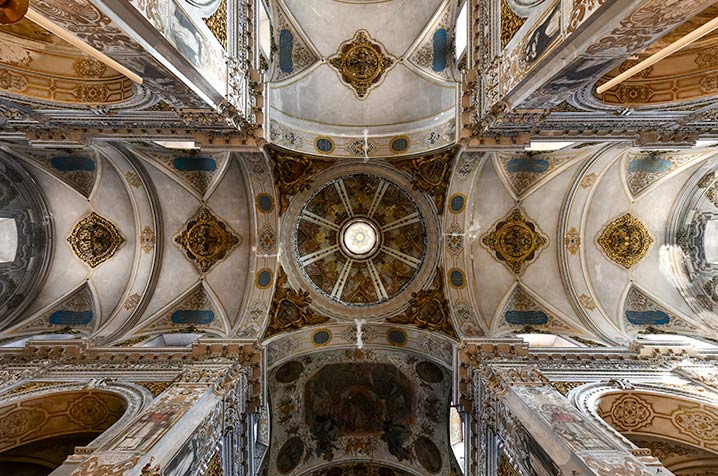 Je
Je
